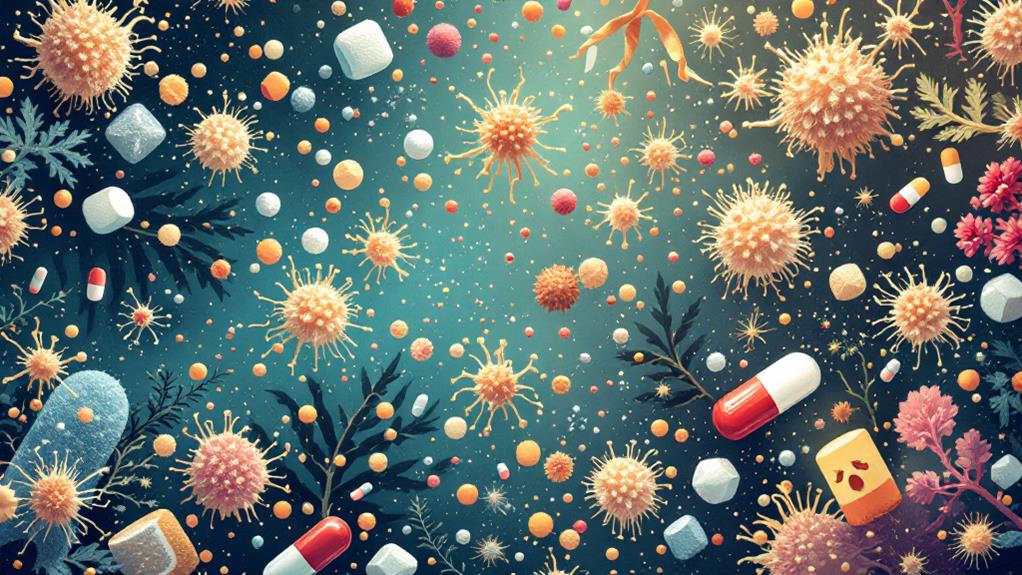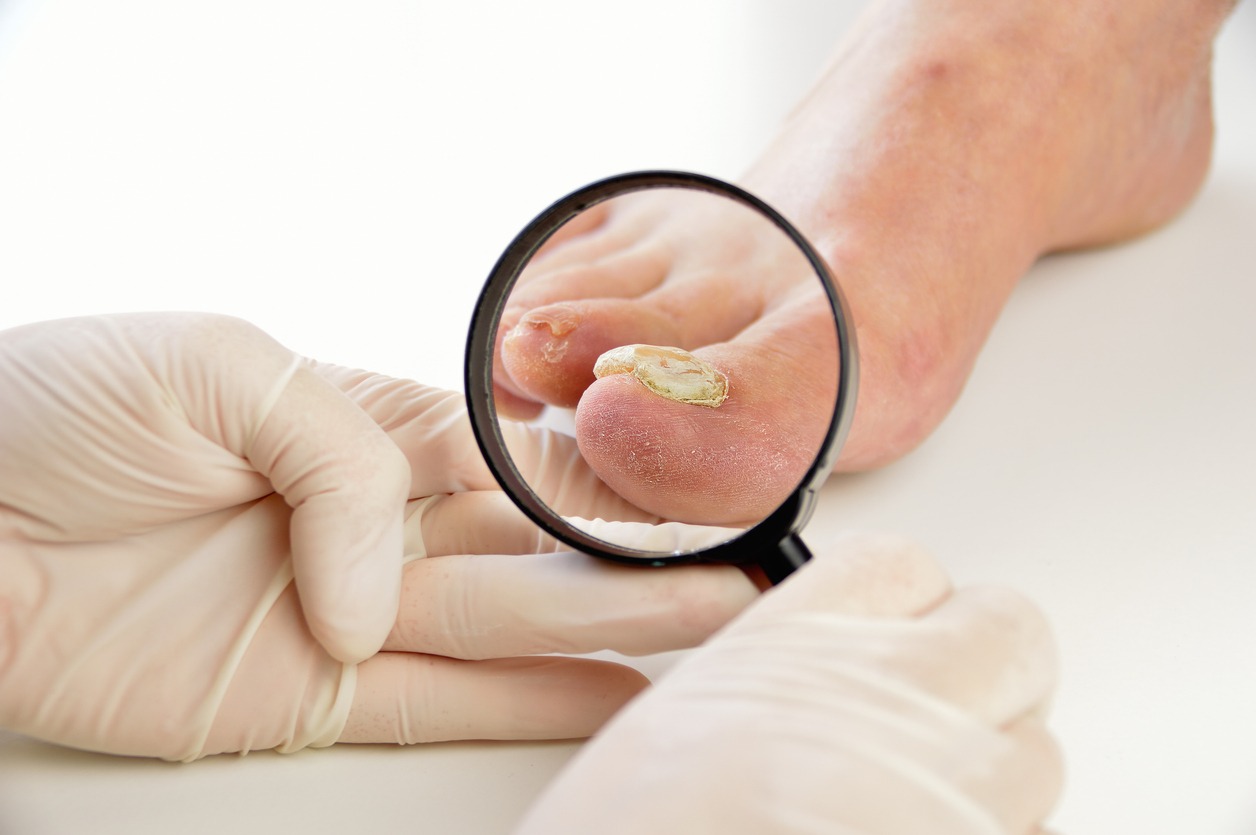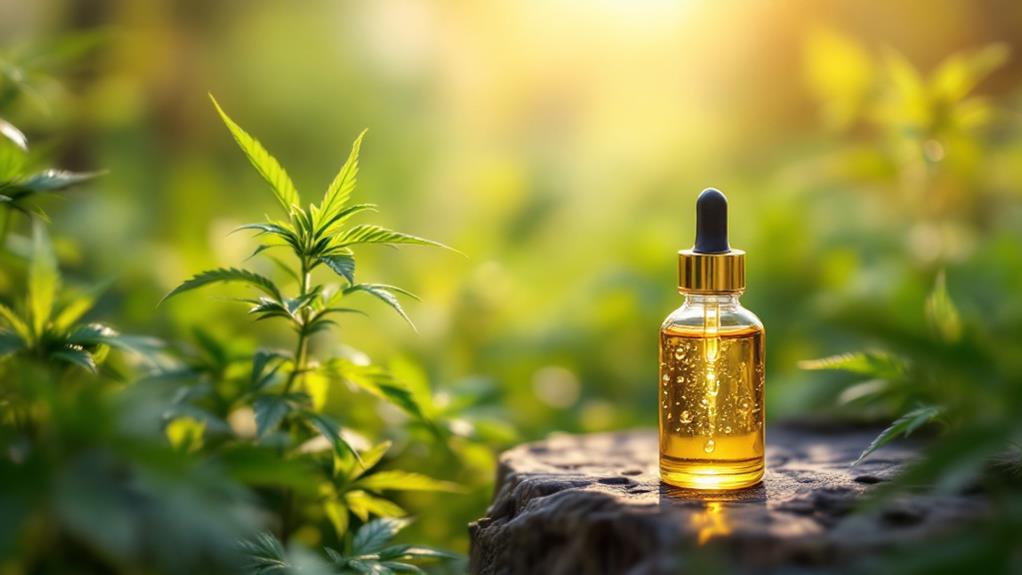What Causes Razor Burn and Razor Bumps? Understanding the Skin Irritation
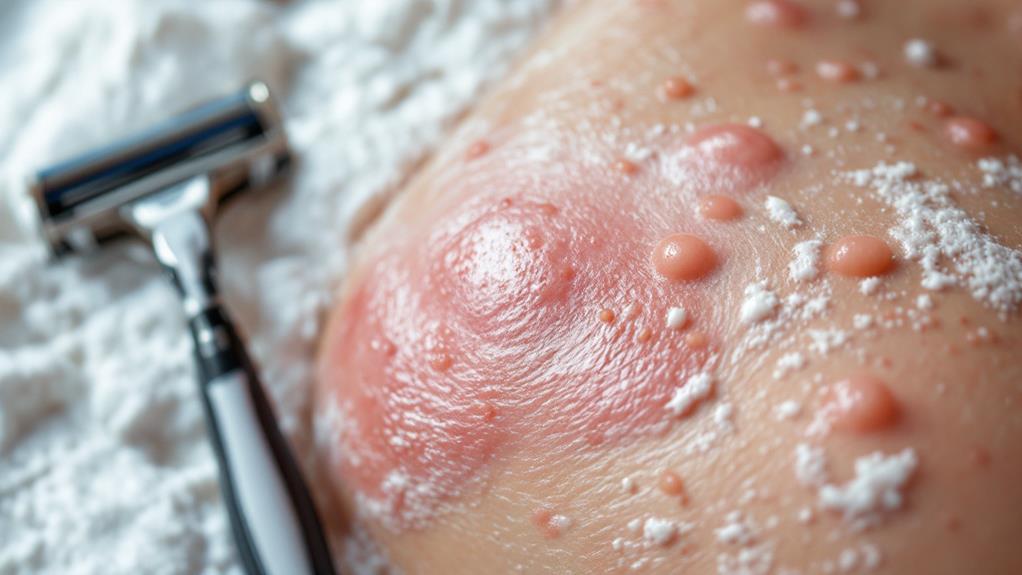
When you shave, razor burn and bumps are common issues caused by skin irritation from the blade. Friction from shaving, especially against hair growth, disrupts your skin's barrier, resulting in red, itchy patches. Skipping shaving cream or using dull blades can worsen the situation. Sensitive skin types are particularly vulnerable. Razor bumps form when hair grows back into the skin, often due to curly hair. These result in painful, itchy little bumps. Prevention involves proper technique and care, like using moisturizers and sharp blades. By focusing on these steps, you can find out how to greatly reduce irritation.
Understanding Razor Burn
Razor burn is a common skin irritation that many people experience after shaving. It often manifests as red, inflamed patches on your skin, accompanied by that annoying itching, burning, and stinging sensation. You might notice these symptoms shortly after you've shaved areas like your face, neck, legs, armpits, or pubic region. The trauma of the razor blade can create microscopic cracks on your skin, leading to inflammation and discomfort.
Understanding the causes of razor burn is essential in preventing it. Common causes include using dull or old blades, dry shaving, shaving against the grain, and not using enough lubrication. These practices can increase the risk of developing those irritating red bumps. Furthermore, improper shaving techniques can lead to ingrown hairs, which further exacerbate the problem.
To alleviate the symptoms, you should adopt good shaving habits. Make sure your skin is well-prepared and moisturized before shaving, and always use a sharp, clean blade. Shaving with the grain and using a quality shaving cream can greatly reduce the chances of irritation. If symptoms persist, consulting a healthcare professional might be necessary to manage the inflammation effectively. Prevention is always better than cure, so take care of your skin to avoid the discomfort of razor burn.
Causes of Skin Irritation
Skin irritation often stems from multiple factors that disrupt the skin's natural barrier, leading to discomfort and inflammation. One primary cause of razor burn is the friction from the razor blade. This friction can disrupt the outer skin layer, resulting in inflammation and red, itchy rashes. If you skip using a shaving cream or gel, you're more likely to experience this type of skin irritation. The absence of a lubricant considerably raises the risk of razor burn as it increases friction between the razor and your skin.
Shaving against the direction of hair growth is another common mistake that heightens irritation. By doing so, you increase not only friction but also the likelihood of causing microscopic damage to your skin. Those with sensitive skin are particularly prone to these issues. Using harsh shaving products can exacerbate the problem, leading to even more irritation.
Frequent shaving of the same area can result in cumulative irritation. Over time, this increases the likelihood of developing razor bumps and further skin problems. To mitigate these effects, choose gentle shaving products and always shave in the direction of hair growth to reduce friction and potential damage.
Symptoms and Diagnosis
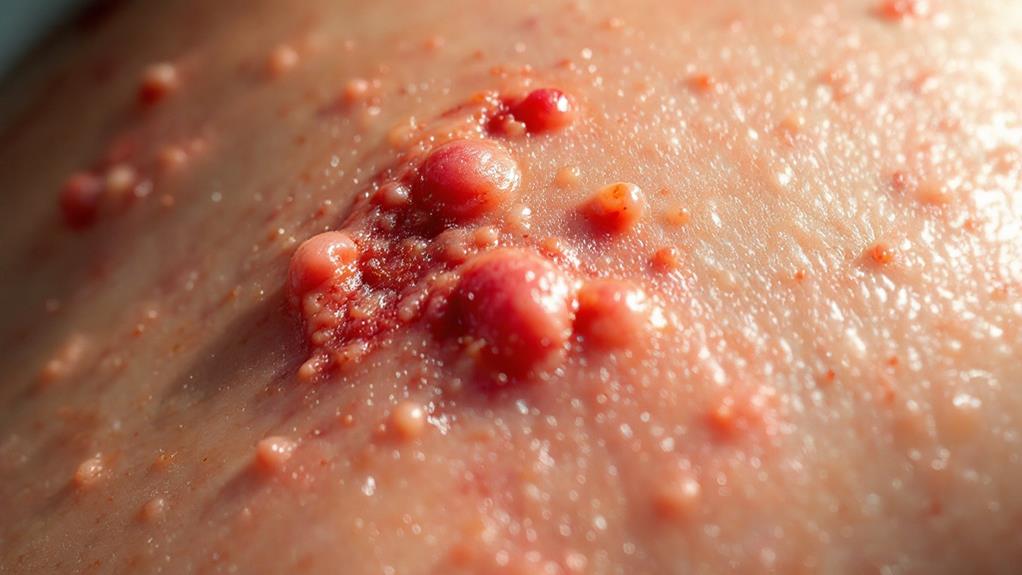
The discomfort of razor burn manifests as red, inflamed patches on your skin, often accompanied by itching, stinging, and small bumps or blisters right after shaving. These symptoms can be quite bothersome, leading to a noticeable red rash on the affected areas. As the skin irritation develops, you might feel an increasing level of discomfort. While razor burn appears almost immediately, razor bumps, often due to ingrown hairs, may show up later, resembling acne, and can cause further discomfort or even pain.
Diagnosing razor burn is typically straightforward. A visual examination by a healthcare provider will usually reveal the characteristic red rash in areas you've recently shaved. They might ask about your shaving practices, including the technique and products you use, to distinguish between razor burn and other potential skin conditions. This helps in identifying if your symptoms are indeed due to razor burn or another issue.
If the symptoms persist beyond a few days or worsen, it's advisable to consult a healthcare provider. This helps rule out other dermatological problems that might require different treatments. Understanding these signs and seeking timely diagnosis can effectively manage the discomfort associated with razor burn.
Razor Burn Treatment
A few simple treatments can greatly ease the discomfort of razor burn. Start by applying gentle moisturizers to hydrate and soothe the affected area. This step helps alleviate skin irritation and reduces the risk of razor bumps. If you're dealing with inflammation, over-the-counter 1% hydrocortisone cream can be a game-changer. Apply it twice daily for 1-2 weeks to effectively calm the inflammation.
Aloe vera gel is another fantastic option due to its cooling effect and anti-inflammatory properties. It promotes healing and provides relief after shaving. For immediate comfort, use a cool washcloth or cold compress on the irritated skin. This will help soothe razor burn quickly.
While these home remedies can be quite effective, sometimes they might not completely resolve your symptoms. If you find that razor burn persists despite these efforts, it's wise to consult a dermatologist. They can offer tailored treatment options, ensuring you get the right care for your skin type.
Preventing Razor Burn
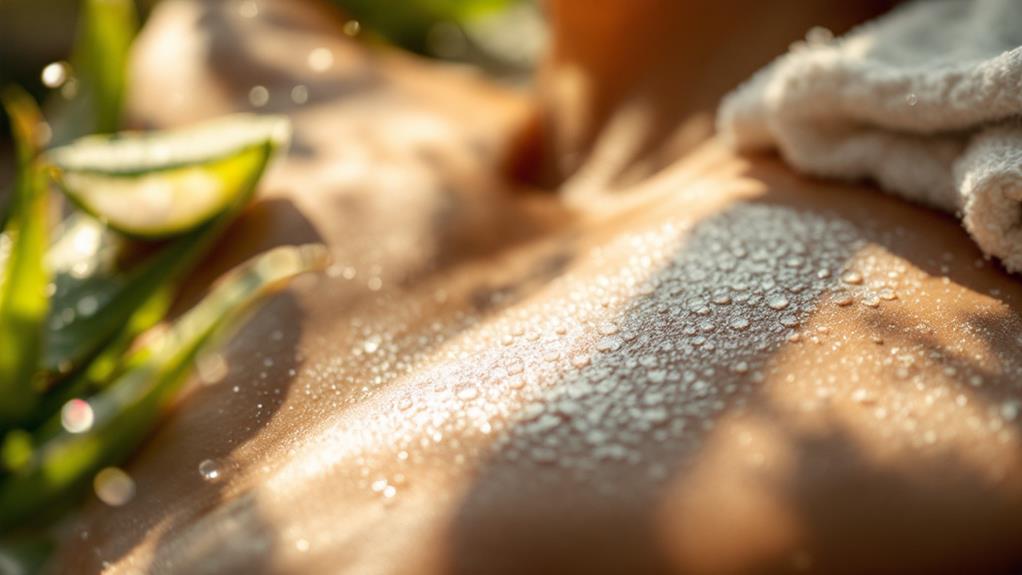
Looking to keep razor burn at bay? Start by prepping your skin with warm water, ideally during or after a shower. This softens the skin and opens pores, helping to reduce irritation. Next, choose a high-quality shaving cream or gel. It creates a protective barrier, minimizing friction and aiding in preventing razor burn. Always shave in the direction of hair growth using gentle, single strokes. This technique avoids pulling on the skin, which can cause micro-tears and irritate your skin.
As you shave, frequently rinse your razor to remove hair and shaving cream buildup. Keeping the blade clean guarantees it remains effective and reduces the risk of irritation. Once you're done shaving, apply a moisturizing cream or soothing aftershave lotion. This hydrates your skin and helps repair the skin barrier, reducing the chances of razor burn.
If you feel any irritation, use a cool washcloth to reduce inflammation. Remember, razor bumps are ingrown hairs, so it's crucial to take care of your skin post-shave. Applying an emollient can further soothe your skin, leaving it smooth and comfortable.
Exploring Razor Bumps
Razor bumps, often known as pseudofolliculitis barbae, can be a persistent annoyance for many. They occur when shaved hair re-enters the skin, leading to inflammation and irritation that often resembles acne. If you've got curly hair, you're at a higher risk of developing these bumps because your hair naturally curls back into the follicle. This can result in symptoms like red bumps, itching, pain, and sometimes even pustules. These bumps can also lead to post-inflammatory hyperpigmentation or scarring if not managed properly.
Razor bumps are particularly prevalent in men who shave, with statistics showing that a staggering 45% to 95% of African American men experience this condition at some point. To tackle this issue, consider adopting effective prevention strategies. Shaving in the direction of hair growth can greatly reduce irritation. Furthermore, using non-irritating shaving products can help minimize the risk of developing razor bumps. Allowing your hair to grow longer between shaves is another useful tactic, as it reduces the frequency of irritation. By taking these steps, you can manage and hopefully prevent those pesky razor bumps from disrupting your daily routine.
When to Seek Help
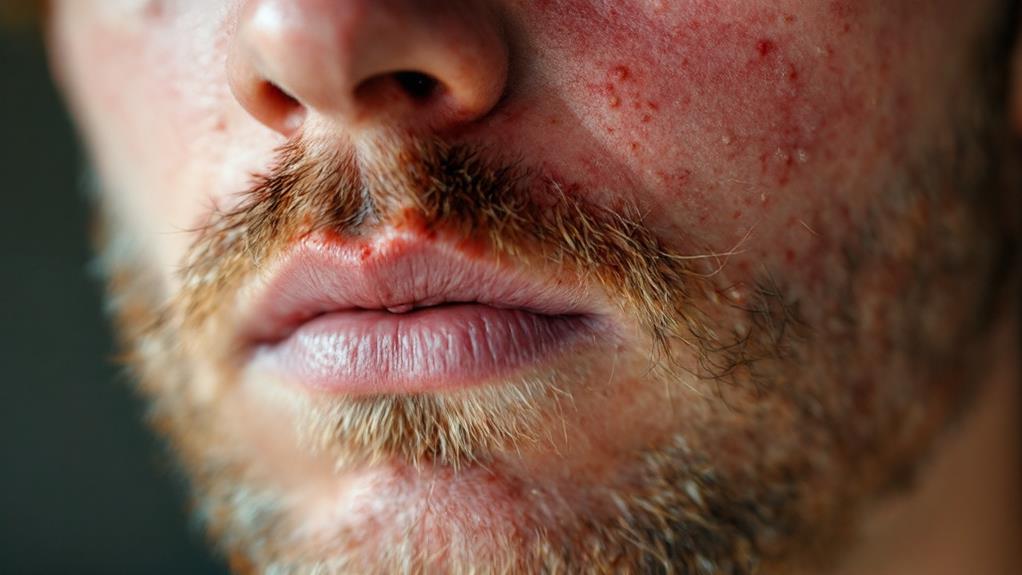
Sometimes, it's difficult to know when razor bumps shift from a mere inconvenience to a problem requiring professional attention. If your razor burn symptoms persist beyond 1-2 days, it could indicate a more serious skin condition, and it's wise to seek help from a healthcare professional. Persistent skin irritation shouldn't be ignored, as it might require a dermatologist's insight.
Severe pain, swelling, or signs of infection, such as pus-filled bumps or increased redness, are clear signals to consult a dermatologist. These symptoms suggest that your razor bumps could be infected, demanding medical advice for effective management. A dermatologist can offer personalized treatment options tailored to your skin condition, ensuring you get the relief you need.
If you frequently suffer from razor bumps or discomfort, it might be time to discuss alternative hair removal methods with a professional. Chronic issues deserve a closer look, and exploring prescription treatments can make a significant difference. Moreover, if you notice any notable skin changes like new growths or changes in existing moles after shaving, don't hesitate to seek help. It's vital to consult a dermatologist immediately for proper evaluation and care.


